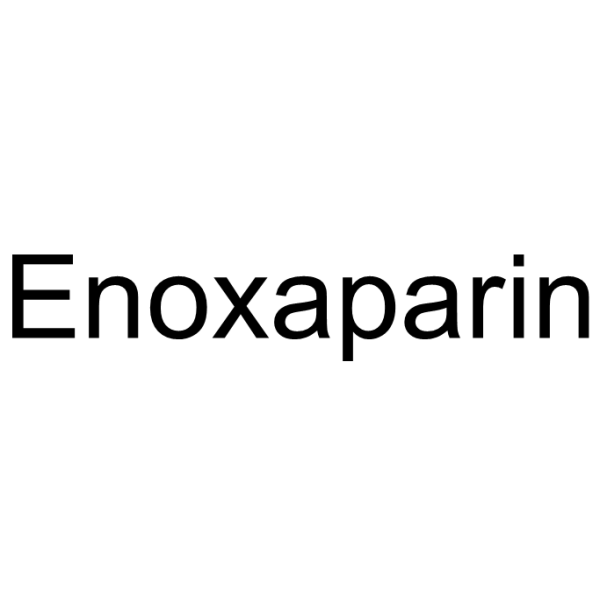679809-58-6
| Name | Enoxaparin sodium |
|---|---|
| Synonyms |
Clexane
Enoxaparin Enoxil Klexane Lovenox |
| Description | Enoxaparin (PK 10169), a low-molecular-weight heparin (LMWH) derivative. Enoxaparin exerts anticoagulant activity through antithrombin III, an endogenous inhibitor of factor Xa and thrombin IIa. Enoxaparin protect the rat hippocampus against TBI (traumatic brain injury) via antioxidant and anti-inflammatory properties. Enoxaparin can be used for the research of deep vein thrombosis (DVT), pulmonary embolism, TBI and COVID-19[1][2][3]. |
|---|---|
| Related Catalog | |
| In Vitro | Enoxaparin (0-70 µg/mL, 90 min) enhances AAT (alpha-1-antitrypsin) inhibition of both TMPRSS2 (Transmembrane Protease 2) activity and infection of hAEc (human airway epithelial cells) with HCoV-229E[1]. Cell Viability Assay[1] Cell Line: HEK293T TMPRSS2 cells, hAEc Concentration: 0, 8.8, 35, 70 µg/mL Incubation Time: 90 min Result: Significantly inhibited TMPRSS2 activity at the 90 min incubation period at 35 and 70 µg/mL, enhanced AAT inhibition of TMPRSS2 activity, and augmented AAT inhibition of HCoV-229E infection of hAEc. |
| In Vivo | Enoxaparin (1 mg/kg; SC; once every 6 h for 8 times) reduces oxidative damage, inflammation and astrocytosis following TBI (traumatic brain injury) in the rat[2]. Animal Model: Adult male Wistar rats (350-450 g, TBI-treated)[2] Dosage: 0 mg/kg, 1 mg/kg Administration: SC, once every 6 h, starting at 1 h, and finishing at 43 h after the TBI induction. Result: Significantly decreased the hippocampal TBARS and oxidized protein levels, COX-2 overexpression and reactive gliosis, but it did not influence the SOD and GSH-Px activities, pro-IL-1β and active caspase-3 overexpressions as well as neurodegeneration following TBI. Reduce oxidative damage, inflammation and astrocytosis following TBI in the rat. |
| References |
| Molecular Formula | C26H42N2O37S5 |
|---|---|
| Molecular Weight | 1134.92788 |
| Storage condition | -20℃ |
